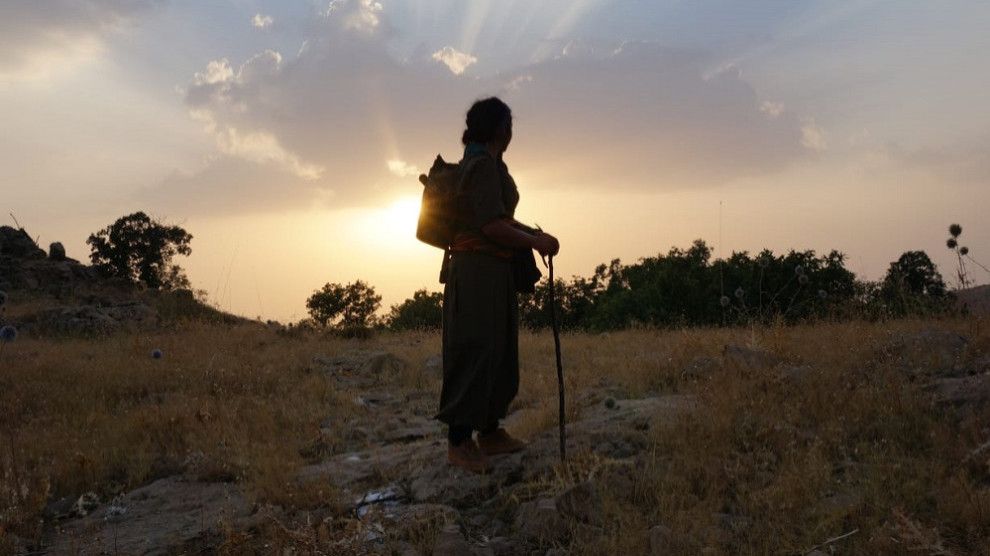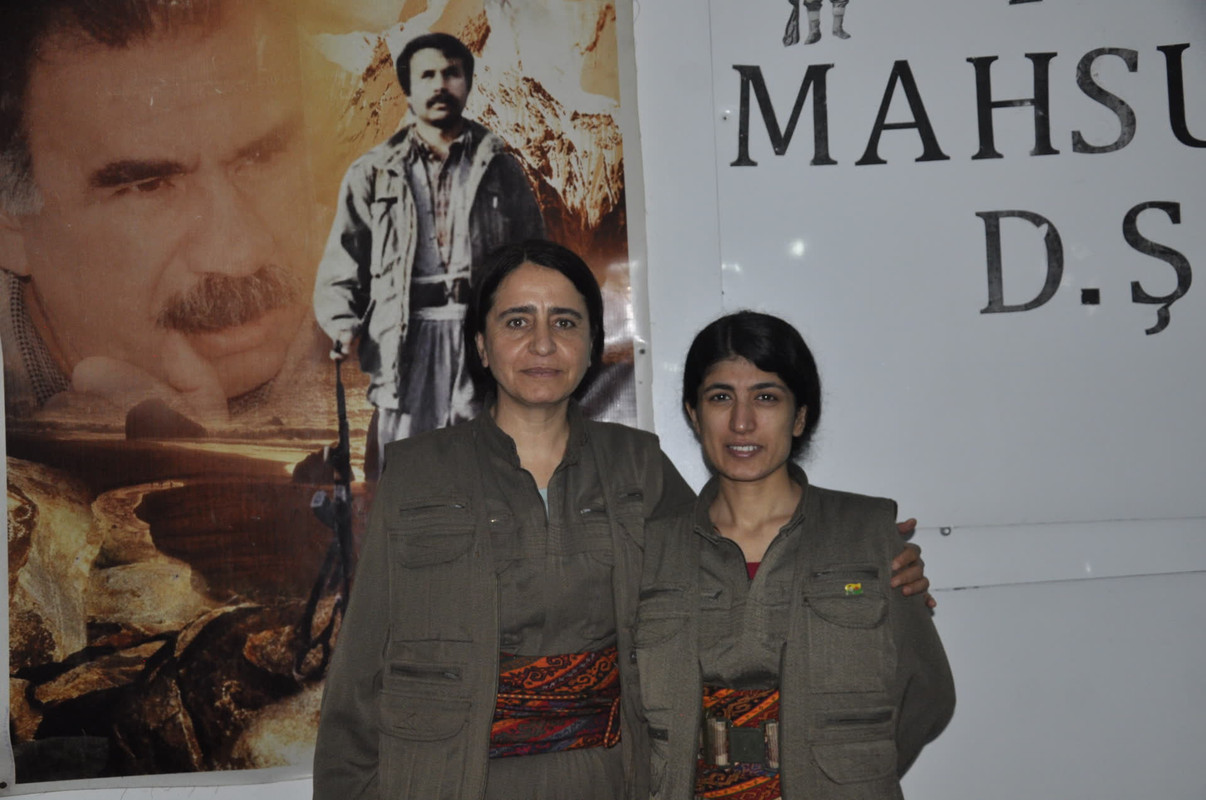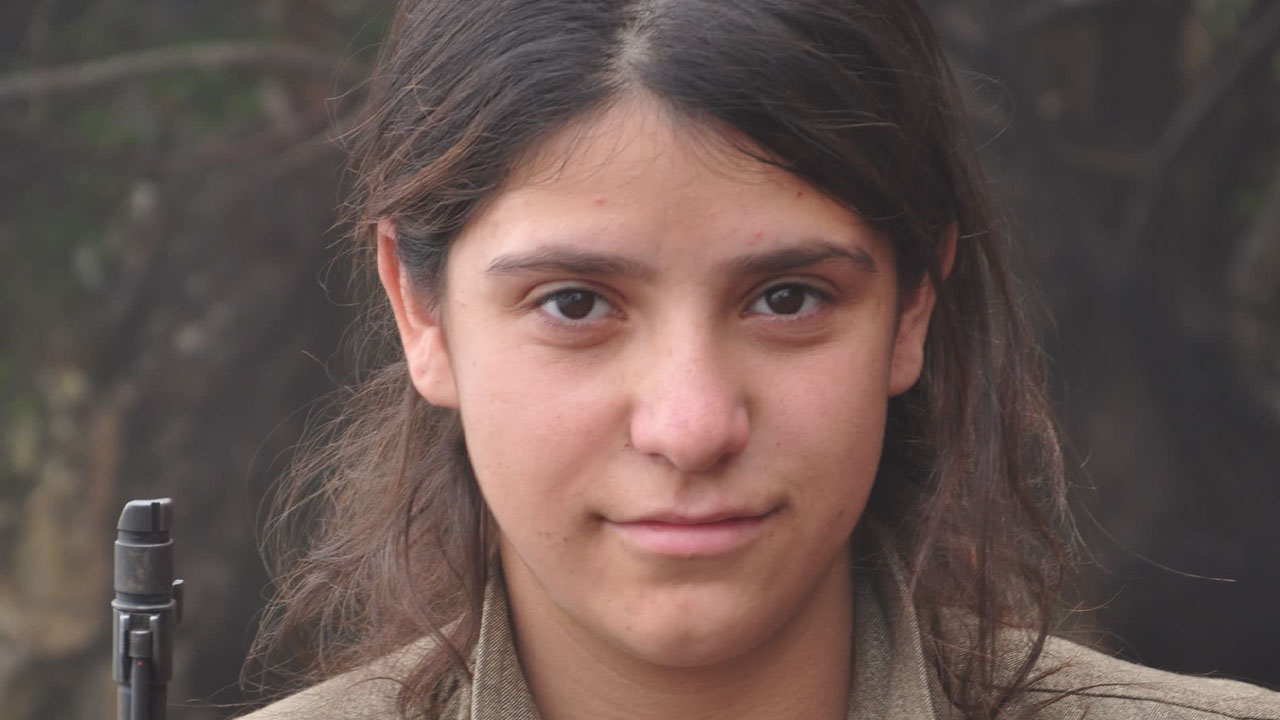"This is just the beginning of the Heftanin Offensive"
Deniz Ararat was there when guerrilla forces repulsed the first Turkish troops that tried to occupy Heftanin. She survived injured and tells about her experiences and her fallen comrades.
Deniz Ararat was there when guerrilla forces repulsed the first Turkish troops that tried to occupy Heftanin. She survived injured and tells about her experiences and her fallen comrades.

On 16 June, Turkey extended its large-scale invasion against the region of Heftanin in Southern Kurdistan (Northern Iraq) significantly. Already since August 23, 2019, the Turkish army had been trying unsuccessfully to put one leg on the ground of Heftanin. Deniz Ararat took part in the counter-offensive of the guerrilla until she was injured. The guerrilla fighter spoke to ANF about the resistance of Heftanin. Ararat says that especially the resistance of the past year laid the foundation for the guerrilla's success in Heftanin today.
The attack of the Turkish army in August last year began with the attack on Geliyê Pisaxa in the Partîzan areas. As Deniz Ararat reports in retrospect, the Turkish army was able to take a few hills at first, until the guerrillas fiercely replied to the attacks on Hill Partîzan and continued their counteroffensive at the hills of Konferans, Sîser, Şehîd Mervan and Şehîd Şexmûs. As a result, the Turkish military had to withdraw from Hill Şehîd Mervan, tells Ararat. This first resistance guaranteed that today's fight in Heftanin would be even more effective. Especially in the areas of Xantûr and Şeşdara, the Turkish military did not expect such fierce resistance and was hit hard. The areas of Dûpişk and Şeşdara were important positions to cover the fighters at Xantûr. Ararat tells that she personally knew most of those who fought there on the front line.
"This was only the beginning of the offensive Battle of Heftanin," says Ararat and adds: "The guerrillas will extend the fight considerably." Deniz Ararat feels deeply connected to the martyrs of Heftranin and tells about some of them.
Zelal - Commander of an autonomous unit
"Zelal has only recently fallen. She was commander of an autonomous unit and had perfected in the Zagros war. This was evident in her mature attitude and the way she spoke. When the enemy arrived in Pisaxa, Zelal told us this: 'This is the paradise of Kurdistan, the enemy wants to invade here, we have to stop them'. All friends who have been to Zagros know the beauty of the region, but the beauty of Heftanin impressed Zelal even more. When the enemy reached Pisaxa, she was just unstoppable, saying that the enemy was not allowed to be here. When I was staying in the house of the injured, I heard that the operation had been expanded in Şeşdara. Everyone said 'Zelal is leading the dance again'. There was indeed extraordinary resistance. Comrades were martyred but the enemy was in shock despite all his technique. This resistance developed under Zelal's leadership. Every action in Heftanin bore her stamp.
Nucan inspired all
Another martyr is Nucan. It is possible that she is the reason I joined the movement. When I went to school in Izmir, I met her in youth work. Then I met her again in Rojava. But it was only in Heftanin that I got to know her better. Because of her, hundreds of young people have joined the guerrilla. Everyone has difficulties sometimes, but it's important to learn from the problems. The friends in the combat zone resisted; all the friends in the Şeşdara resistance fought and many died. No matter how much you tell about them, it is not enough. These friends became the personified response to the attacks of the enemy. They have shown that the enemy can't just march in here.
 Nûcan Serdoz (r.) with Zozan Çewlîk, a commander of the YJA-Star headquarters
Nûcan Serdoz (r.) with Zozan Çewlîk, a commander of the YJA-Star headquarters
Agît Zaxo - A young fighter from Southern Kurdistan
Another example is friend Agît Zaxo. He must be told about at every opportunity. He was a young comrade who faced the enemy with a medium-weight weapon. He fought against Cobra attack helicopters and, despite his young age, did not retreat a step. After the detection of the position of his unit, they were attacked from the air and martyred. When Agit's commander fell next to him, he wrote in his diary: "If I fall, bury me with Comrade Arnûs' cartridge belt". And before he fell himself, he had put on his comrade's cartridge belt. One feels guilty in this situation. This guilt can only be removed by expanding actions. He fell with the cartridge belt of his comrade, which shows the loyalty to the martyrs. This fact is very important. In spite of his young age, he understood this quickly and learned to use weapons. He was closely connected with his country, his comrades and full of hope. The South Kurdistan government has spread the claim among the youth that the PKK only represents the North (of Kurdistan). Leaders like Agît Zaxo are frustrating this propaganda. Comrade Agit has understood this and joined the struggle alongside his uncle and eight other young people.
Zagros - From Eastern Kurdistan to Heftanin
Another fallen friend was Zagros, who came from Eastern Kurdistan. He had been with the movement for 15 or 16 years. He was the one who led the action on the Partîzan hill where 20 soldiers were killed. The friends had chased the enemy from the hill and became the target of an air raid while they returned. Zagros was always ready to fight the enemy. He said, 'We have to give the enemy an answer so that they can't stay here anymore'.
Amara - Not even the shadow of the enemy may fall on this area
Amara was from Serhat region of Northern Kurdistan. She had just been deployed to Heftanin and was enthusiastic about the region. She said: 'Not even the shadow of the enemy should fall on this region. We must not let that happen. We must not allow the agents to run around here. This ground is sacred'. She was at the Pisaxa Partisan hill. She also fell during the operation there.
 Amara Roj
Amara Roj
Biharîn and Diren
Biharîn and Diren were two young friends. Despite reconnaissance flights and air surveillance, the two could hardly stay calm. They did everything that was necessary. They never stopped once from Qesrok to Konferans. They have done a great job. Biharîn, in particular, was a leader in the Heftanin offensive. She was young, but when you looked at her practice, you would think that she had been doing this for many years. She was highly connected with the movement and the martyrs. She was enthusiastic about Heftanin and said she would stay there.
Ali Firat - "I want to ask the enemy what they have to do in Kurdistan"
Another of the martyrs is Ali Firat. He was new to the region and used to say: 'I must not fall a martyr in air raids. I must storm the enemy's positions and ask what these fascists have to do in Kurdistan'. He made this dream come true. He was also part of the action at the Partîzan hill, where 20 soldiers were killed. His unit consisted of three friends. Ali, Dinya and one more friend. Ali said: 'I don't want to just fall and leave the comrades and the movement alone’. After this action, he took part in many other actions at the Partîzan hill. He fell during an air raid, shortly after his return from a sniper action. He was also a commander. Brave and ready to sacrifice. He came from a patriotic family and had been wounded earlier in the fight against the ISIS. Nevertheless he took part in the resistance of Heftanin and fought heroically.
Berfîn and Bêrîtan - The fighters infiltrated into enemy positions
Comrade Berfîn also took part in the action at the Konferans hill. She had spent a long time both there and at the Partîzan hill. Bêrîtan also fought in the same region. The two friends stormed enemy positions and destroyed the fortifications. This is how they fell as martyrs. This attitude shows the role of the women in Heftanin. There were very few male friends there, and the women carried most of the burden.
Rûbar insisted on participating in the action
I must also speak of Rûbar. His cousin Amara fell on the Partisan hill. Although he had another mission, he insisted on taking part in the action at the Konferans hill. During the action, he stormed enemy’s positions and fell there. These friends became the vanguard of the Battle of Heftanin offensive. Now their number is increasing".